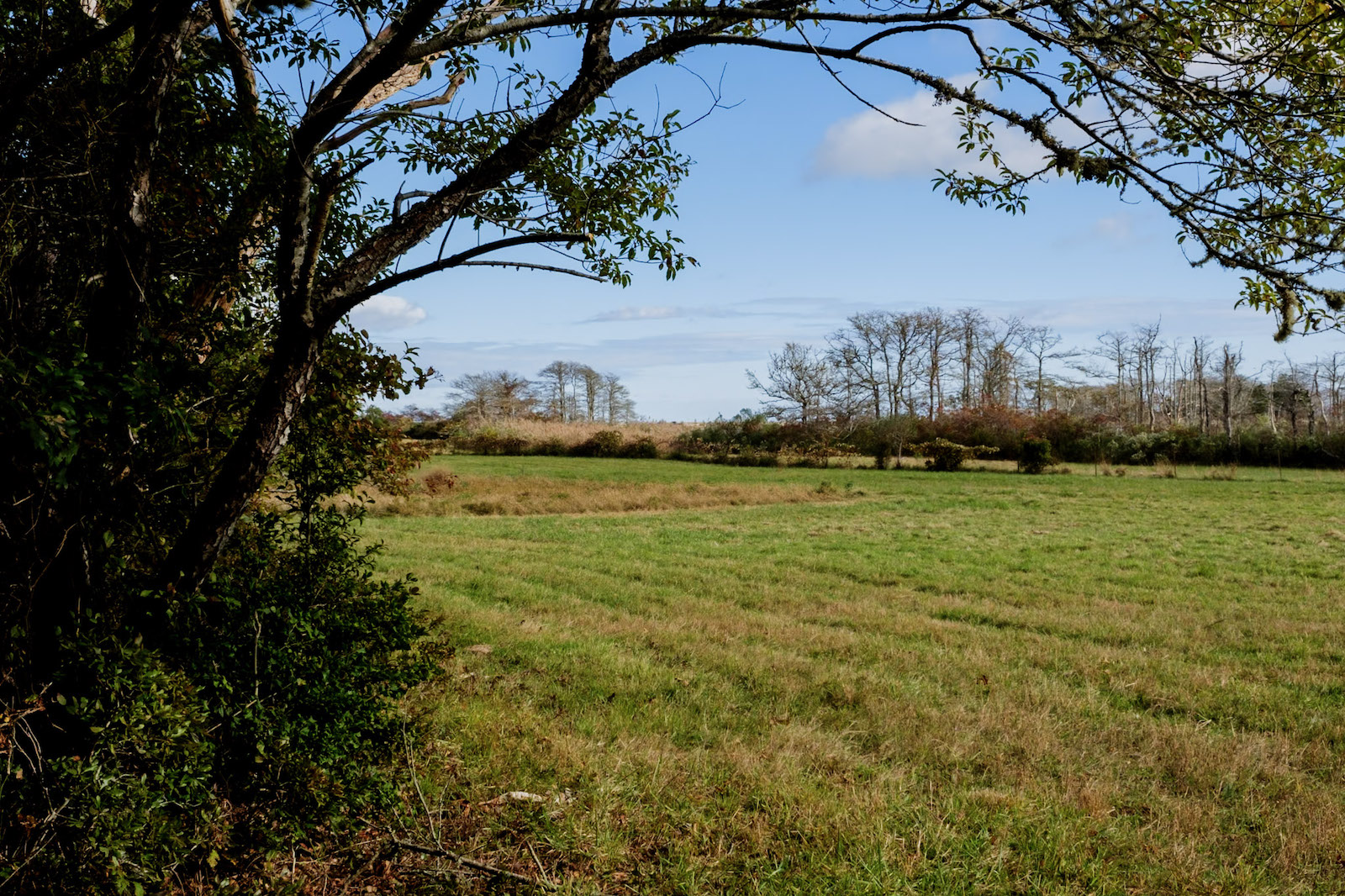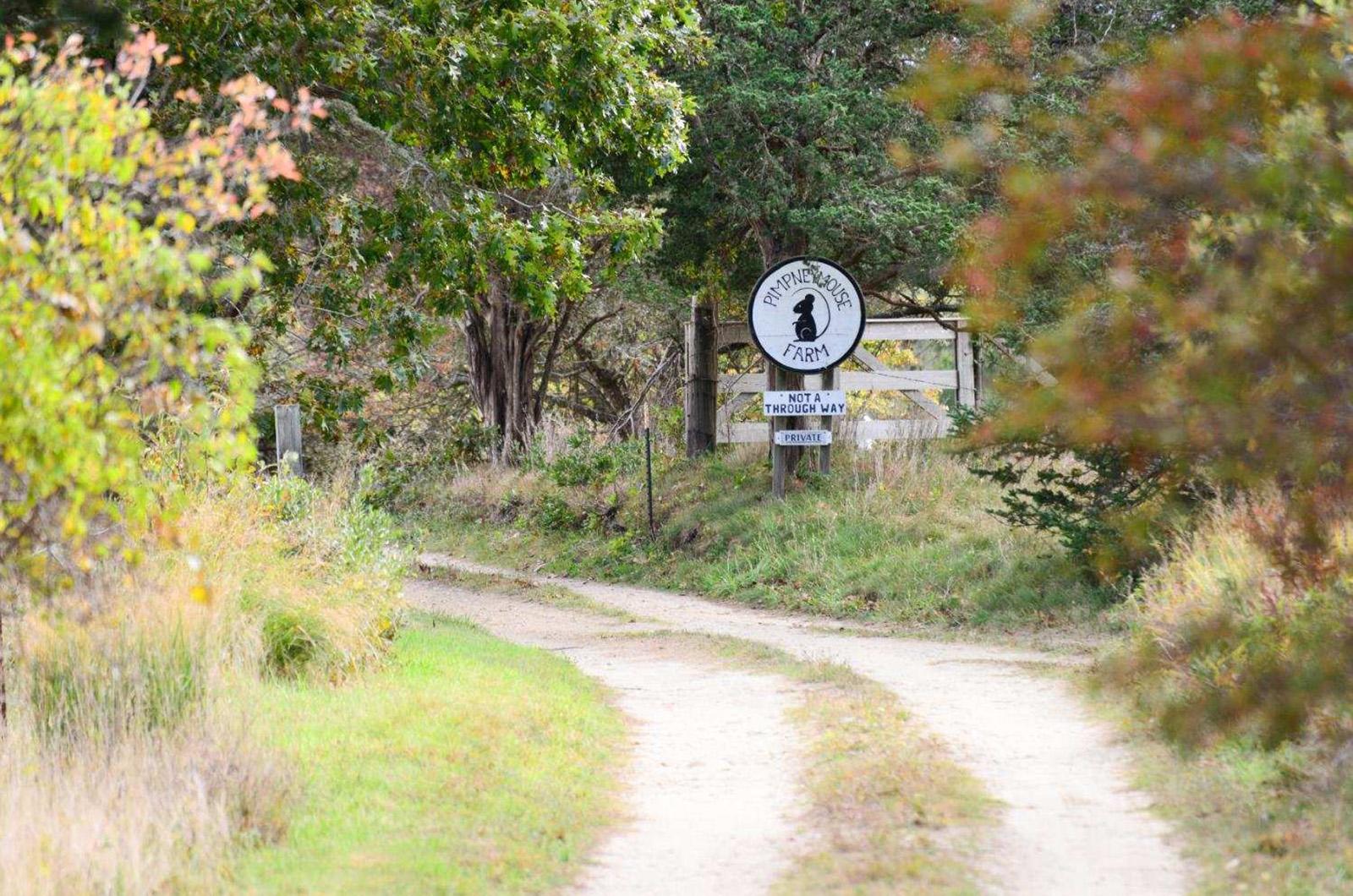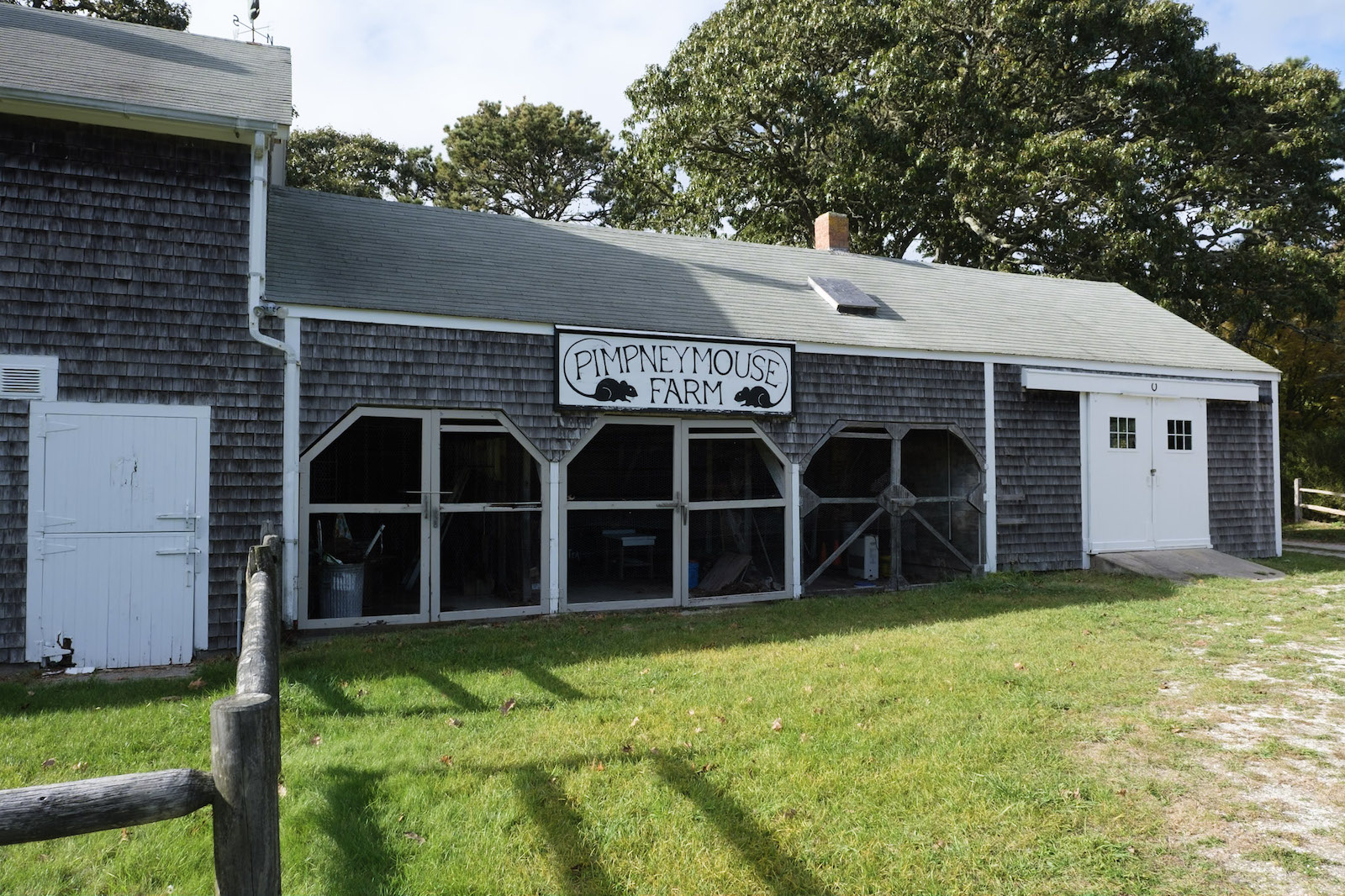Pimpneymouse Farm, the historic coastal farm that has graced the eastern-facing shoreline of Chappaquiddick for nearly a century, is slated for preservation in a joint conservation purchase by the Martha’s Vineyard Land Bank and the Sheriff’s Meadow Foundation, aided by a major contribution this week from the commonwealth.
The plan was confirmed by Sheriff’s Meadow executive director Adam Moore after the Healey-Driscoll administration said in a press release that it would contribute $1.25 million toward the purchase of the 166-acre farm that has long been a symbol of Chappaquiddick.
The total price that will be paid for the property is $13.78 million, Mr. Moore said, with the two conservation groups splitting the amount. Sheriff’s Meadow is continuing to fundraise for the last $1.5 million of its $5.78 million share, Mr. Moore said.
“We’ve been working quietly with the land bank to conserve Pimpneymouse Farm on Chappaquiddick for little over a year now,” he said.
Citing land bank policy, executive director James Lengyel said he was unable to comment because no contract has been signed yet.
“The land bank does not comment on prospective acquisitions,” he said.
Pimpneymouse Farm is owned by the Potter and Slater family, who are relatives of the late Edith W. (Edo) Potter, a longtime Chappaquiddick resident and one of the earliest leaders in conservation on the Island. Ms. Potter, who had many other public roles including as a selectman in Edgartown, died in 2018. Her father Charles Welch started the farm in 1932, and she continued to manage it for 50 years after his death in 1947. Her 2010 memoir The Last Farm on Chappaquiddick, details the history of the property — a working gentleman’s farm where hay was raised, horses were kept and the coastal marshlands fronting Poucha Pond were used for duck hunting.
The farm includes several houses, a barn and other outbuildings. About 35 acres of the property will continue to be held by members of the family, Mr. Moore said. The farm directly abuts 612 acres of protected open space, and the plan calls for eventually creating connecting trails with nearby conservation lands, including at Wasque Reservation, and at other land bank properties.
“It will make some very significant trail connections,” Mr. Moore said. He also took special note of the significance of the purchase, since Ms. Potter had served both on the land bank and on the Sheriff’s Meadow board of directors.
Once completed, this will mark the second major joint conservation purchase with the two groups, which partnered in 2020 to buy Red Gate Farm in Aquinnah, the 304-acre oceanfront estate owned by the family of Caroline B. Kennedy. That property now makes up part of Squibnocket Pond Reservation.
Those who knew Ms. Potter were not surprised about plans to put her family estate into conservation.
“I couldn’t see it any other way really,” Edgartown poet laureate Steve Ewing said Tuesday. “If something happened and they didn’t do it, it’s possible the people of Chappaquiddick would rally to do it ourselves.”
Over decades serving on various Island boards together, Mr. Ewing said he came to know Ms. Potter as a “great force” in the Island community. In 2015, he penned a commemorative poem upon her retirement from the land bank, writing: “Remember a woman of / persistent courage / Who stands up so proudly / for what she holds dear.”

“She was like your aunt,” Mr. Ewing said. “Not your mother, but your aunt. You could tell her anything. With your mother, you can’t.”
Others who worked with Ms. Potter felt similarly. Vineyard conservationist Tom Chase said he first met Ms. Potter while volunteering at Felix Neck Wildlife Sanctuary and that she was integral to helping him get his first paid conservation job on the Island – working under onetime Gazette publisher Henry Beetle Hough at the Sheriff’s Meadow Foundation.
“I knew that was Edo’s wish,” Mr. Chase said of the plan to conserve her family’s property. “I was glad to see the Land Bank and Sheriff’s Meadow rise to that wish and honor that.”
Mr. Chase said he visited Pimpneymouse Farm many times as a guest of Ms. Potter’s, and could not think of another individual who had been so impactful in Island conservation. To him, Ms. Potter represented a bygone era of community-based conservationism, when personal relationships could go further to bridge ideological gaps. Thanks in part to her work, Mr. Chase said, Islanders understood the role conservation plays to improve daily life.
“Edo knew that conservation had to reflect both the environmental concerns and the human concerns,” he said. “She really deeply integrated the history, the personal relationships, the relationships to the land...she was a pioneer.”
“It’s hard today to be the kind of person Edo was,” he added. “It’s a much more complicated community.”
Editor's note: this story has been updated with further comments.








Comments (33)
Comments
Comment policy »